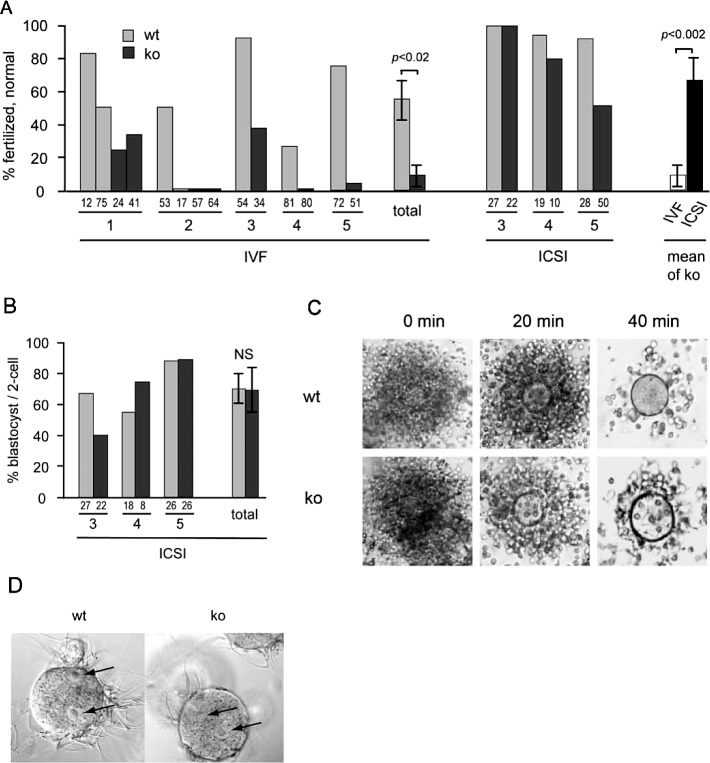FIG. 3.
Spermatozoa from Usp2 −/− mice are defective in in vitro fertilization (IVF) but have normal capacities to disperse the cumulus layer and to fertilize eggs following ICSI or incubation with zona pellucida-free eggs. A, B) Embryonic development following IVF or ICSI using sperm from Usp2 +/+ (wt) or −/− (ko) males. A) Fertilization. Eggs were inseminated, and the number of healthy fertilized eggs was recorded at the one-cell stage (experiment 2) or the two-cell stage (experiments 1, 3–5). Numbers at the base of each column show the number of eggs examined. IVF and ICSI of Usp2 −/− embryos compared in the far-right pair of bars. Shown are the mean rates of fertilization obtained with each procedure. B) Development to blastocyst following ICSI. The fraction of two-cell embryos that reached the blastocyst stage is shown. Numbers at the base of each column show the number of two-cell embryos. C) Cumulus dispersal. Usp2 +/+ or −/− spermatozoa were incubated with egg masses and photographed at the indicated times to assess dispersal of the layer of cumulus cells. Shown are representative images; original magnification ×10 (left and middle panels) and ×20 (right panels). D) Fusion with zona pellucida-free eggs. Usp2 +/+ or −/− spermatozoa were incubated with eggs from which the cumulus cells and zona pellucida had been removed. Six hours later, eggs were fixed, stained with propidium iodide, and examined using bright-field and fluorescence microscopy. Eggs containing two or more pronuclei were classified as fertilized. Shown are representative bright-field images with arrows indicating the pronuclei. Usp2 +/+, 27 of 30 eggs fertilized; Usp2 −/−, 30 of 32 eggs fertilized. Original magnification ×40.

